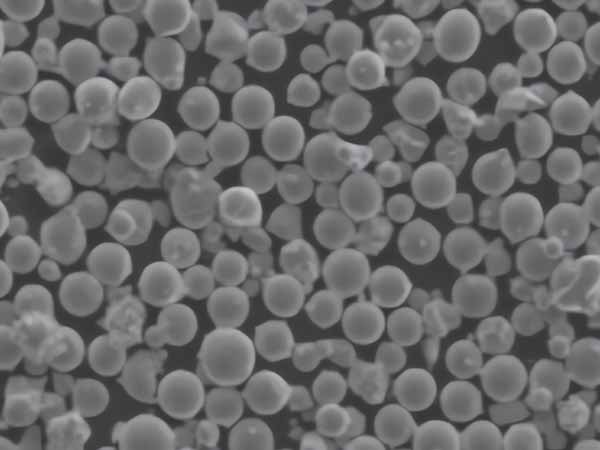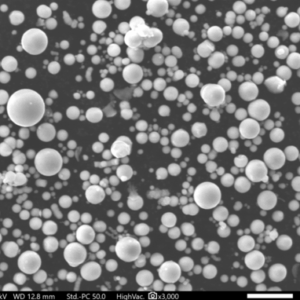In today’s rapidly advancing materials science landscape, high-entropy alloys (HEAs) have emerged as an exciting class of materials that display exceptional mechanical properties, thermal stability, and corrosion resistance. Among these, FeCoNiCrAlTi powder stands out as a multi-component alloy powder with intriguing characteristics. It’s widely used in aerospace, biomedical, and automotive industries due to its unique properties that blend strength, durability, and flexibility.
So, if you’re scratching your head and wondering, “What exactly is FeCoNiCrAlTi powder, and how does it work?”, you’re in the right place. In this guide, we’ll dive deep into everything you need to know about FeCoNiCrAlTi powder. Let’s break it down into bite-sized, easy-to-digest sections while ensuring all the technical nitty-gritty is covered.

Overview of FeCoNiCrAlTi Powder
FeCoNiCrAlTi powder is a high-entropy alloy (HEA) powder composed of iron (Fe), cobalt (Co), nickel (Ni), chromium (Cr), aluminum (Al), and titanium (Ti). HEAs are unique because they are made up of five or more elements in roughly equal concentrations, which gives them distinct properties compared to traditional alloys. FeCoNiCrAlTi is celebrated for its exceptional mechanical strength, corrosion resistance, and thermal stability, which makes it an ideal candidate for demanding applications in industries like aerospace, automotive, and defense.
Let’s look at an overview of FeCoNiCrAlTi powder’s composition and its significance.
Key Composition of FeCoNiCrAlTi Powder
| Element | Symbol | Weight Percentage (%) |
|---|---|---|
| Iron | Fe | 15 – 25 |
| Cobalt | Co | 15 – 25 |
| Nickel | Ni | 15 – 25 |
| Chromium | Cr | 15 – 25 |
| Aluminum | Al | 5 – 15 |
| Titanium | Ti | 5 – 15 |
This high-entropy blend leads to properties that are unique and highly sought-after in critical applications.
Specific Metal Powder Models
The FeCoNiCrAlTi powder isn’t a one-size-fits-all solution; different models with varying compositions and structures are available for specialized applications. Below is a list of specific metal powder models with descriptions:
- FeCoNiCrAlTi-1
- Composition: Fe (20%), Co (20%), Ni (20%), Cr (20%), Al (10%), Ti (10%)
- Characteristics: Known for excellent corrosion resistance and hardness. Often used in coatings and surface treatments in harsh environments.
- FeCoNiCrAlTi-2
- Composition: Fe (25%), Co (15%), Ni (20%), Cr (15%), Al (15%), Ti (10%)
- Characteristics: Improved thermal stability and excellent performance at high temperatures, making it suitable for turbine blades.
- FeCoNiCrAlTi-3
- Composition: Fe (15%), Co (20%), Ni (20%), Cr (20%), Al (15%), Ti (10%)
- Characteristics: High ductility and tensile strength, used in structural components that require durability under stress.
- FeCoNiCrAlTi-4
- Composition: Fe (20%), Co (15%), Ni (15%), Cr (20%), Al (10%), Ti (20%)
- Characteristics: Enhanced toughness and resistance to oxidation, often employed in aerospace components.
- FeCoNiCrAlTi-5
- Composition: Fe (18%), Co (18%), Ni (18%), Cr (18%), Al (14%), Ti (14%)
- Characteristics: Balanced properties, making it suitable for additive manufacturing applications such as 3D printing of complex parts.
- FeCoNiCrAlTi-6
- Composition: Fe (22%), Co (22%), Ni (16%), Cr (16%), Al (12%), Ti (12%)
- Characteristics: Superior wear resistance, often used in cutting tools and die applications.
- FeCoNiCrAlTi-7
- Composition: Fe (19%), Co (19%), Ni (21%), Cr (17%), Al (12%), Ti (12%)
- Characteristics: Lightweight and strong, ideal for automotive components like gears and shafts.
- FeCoNiCrAlTi-8
- Composition: Fe (20%), Co (20%), Ni (20%), Cr (15%), Al (15%), Ti (10%)
- Characteristics: Excellent thermal expansion properties, used in applications involving extreme temperature variations.
- FeCoNiCrAlTi-9
- Composition: Fe (15%), Co (15%), Ni (25%), Cr (20%), Al (10%), Ti (15%)
- Characteristics: High corrosion resistance and weldability, suitable for marine environments.
- FeCoNiCrAlTi-10
- Composition: Fe (25%), Co (20%), Ni (15%), Cr (15%), Al (12%), Ti (13%)
- Characteristics: Exceptional hardness and fatigue resistance, used in high-wear environments like mining and drilling.
Characteristics of FeCoNiCrAlTi Powder
Now that you’ve got a good sense of the composition and specific models, let’s break down the key characteristics of FeCoNiCrAlTi powder. These properties make it the material of choice in various industries.
Mechanical Strength
FeCoNiCrAlTi powder provides incredible mechanical strength due to the unique way the constituent elements interact at a microscopic level. The presence of titanium and aluminum contributes to the formation of strong intermetallic compounds that enhance the alloy’s strength.
Thermal Stability
Thanks to the balance between nickel, chromium, and cobalt, FeCoNiCrAlTi powder has excellent thermal stability, which means it retains its properties even at elevated temperatures. This is crucial for industries like aerospace, where components are subjected to high heat for extended periods.
Corrosion Resistance
Chromium, one of the primary components of FeCoNiCrAlTi powder, is well-known for its corrosion resistance. This alloy is particularly resistant to oxidation and rust, even in harsh environments such as marine and chemical industries.
Wear Resistance
The inclusion of titanium and aluminum gives FeCoNiCrAlTi powder excellent wear resistance, making it ideal for applications where surfaces are subjected to constant friction or mechanical stress.
Advantages of FeCoNiCrAlTi Powder
Why choose FeCoNiCrAlTi powder over traditional materials? Let’s explore the benefits.
1. Exceptional Strength-to-Weight Ratio
FeCoNiCrAlTi powder offers a superior strength-to-weight ratio compared to other materials. This makes it an excellent choice for industries like aerospace, where every gram counts in terms of performance and fuel efficiency.
2. Versatility Across Industries
From the production of automotive parts to aerospace components and even biomedical implants, the versatility of FeCoNiCrAlTi powder is unmatched. It’s used in applications that demand reliability and durability.
3. Superior Resistance to Environmental Factors
FeCoNiCrAlTi powder is highly resistant to environmental factors like corrosion, wear, and extreme temperatures. This makes it an ideal choice for harsh operating conditions where other materials would fail.
4. High Ductility and Toughness
While strength is a major advantage, ductility is equally important. FeCoNiCrAlTi powder maintains excellent toughness and ductility, allowing it to undergo significant deformation without cracking or breaking, which is especially useful in structural applications.
Applications of FeCoNiCrAlTi Powder
Now, let’s take a look at where FeCoNiCrAlTi powder shines the brightest in the real world.
Industries and Applications
| Industry | Applications |
|---|---|
| Aerospace | Turbine blades, heat-resistant coatings |
| Automotive | Lightweight engine components, gears |
| Biomedical | Implants, surgical instruments |
| Marine | Corrosion-resistant coatings, propellers |
| Defense | Armor plating, missile components |
| Energy | Heat exchangers, turbine components |
As you can see, its usage spans industries that rely on materials capable of withstanding stress, high temperatures, and corrosion.
Specifications and Standards
When it comes to manufacturing and applications, FeCoNiCrAlTi powder is produced to meet certain specifications and standards to ensure consistent quality and performance. These standards are crucial to ensure the material behaves predictably under real-world conditions.
Key Specifications of FeCoNiCrAlTi Powder
| Specification | Value/Description |
|---|---|
| Powder Particle Size | 10-45 µm, 45-106 µm (varies by model) |
| Purity | ≥ 99.5% |
| Melting Point | 1,300-1,400 °C |
| Density | ~7.5-8 g/cm³ |
| Hardness | Vickers Hardness: 200-350 HV |
| Yield Strength | 500-800 MPa |
| Standards | ASTM B964, ASTM F75, AMS 4991 |
These specifications vary based on the application and manufacturer, but they ensure that the alloy powder meets
the necessary quality and performance benchmarks.
Pros and Cons of FeCoNiCrAlTi Powder
While FeCoNiCrAlTi powder offers many advantages, it’s important to weigh the pros and cons depending on the intended use. Here’s a quick comparison to help:
| Pros | Cons |
|---|---|
| High mechanical strength | Relatively expensive compared to basic alloys |
| Excellent thermal stability | May require specialized manufacturing techniques |
| Superior corrosion and wear resistance | Availability can be limited for certain grades |
| Versatile applications across industries | Can be difficult to machine due to hardness |
Pricing and Suppliers
The price of FeCoNiCrAlTi powder can vary depending on factors such as particle size, purity, and quantity purchased. Here’s a general guide:
Supplier and Pricing Information
| Supplier | Price (per kg) | Minimum Order Quantity | Grade/Model |
|---|---|---|---|
| Supplier A | $200 | 10 kg | FeCoNiCrAlTi-1 |
| Supplier B | $250 | 5 kg | FeCoNiCrAlTi-2 |
| Supplier C | $220 | 15 kg | FeCoNiCrAlTi-3 |
| Supplier D | $210 | 20 kg | FeCoNiCrAlTi-4 |
These prices can fluctuate based on market demand, availability, and customization requirements. Make sure to check with suppliers for the most up-to-date pricing.

FAQ
To wrap things up, let’s address some of the most common questions about FeCoNiCrAlTi powder.
| Question | Answer |
|---|---|
| What is FeCoNiCrAlTi powder used for? | It’s used in industries such as aerospace, automotive, and biomedical for components that require high strength and durability. |
| How is FeCoNiCrAlTi powder manufactured? | It’s typically produced through processes like atomization or mechanical alloying, ensuring uniform particle sizes. |
| Is FeCoNiCrAlTi powder expensive? | While more expensive than traditional alloys, its superior properties often justify the cost in high-performance applications. |
| Can FeCoNiCrAlTi powder be 3D printed? | Yes, it’s often used in additive manufacturing processes like 3D printing due to its versatility and mechanical properties. |
Conclusion
FeCoNiCrAlTi powder is undoubtedly one of the most versatile and high-performance materials available today. Whether you’re working in aerospace, automotive, or medical industries, its ability to withstand extreme conditions while maintaining exceptional mechanical strength, wear resistance, and corrosion resistance makes it an invaluable resource.
If you’re thinking of incorporating FeCoNiCrAlTi powder into your manufacturing process, it’s essential to consider the specific model, application, and characteristics to ensure you get the best performance. Hopefully, this guide has answered all your questions, and maybe even sparked a few new ideas on how you can utilize this incredible material.














